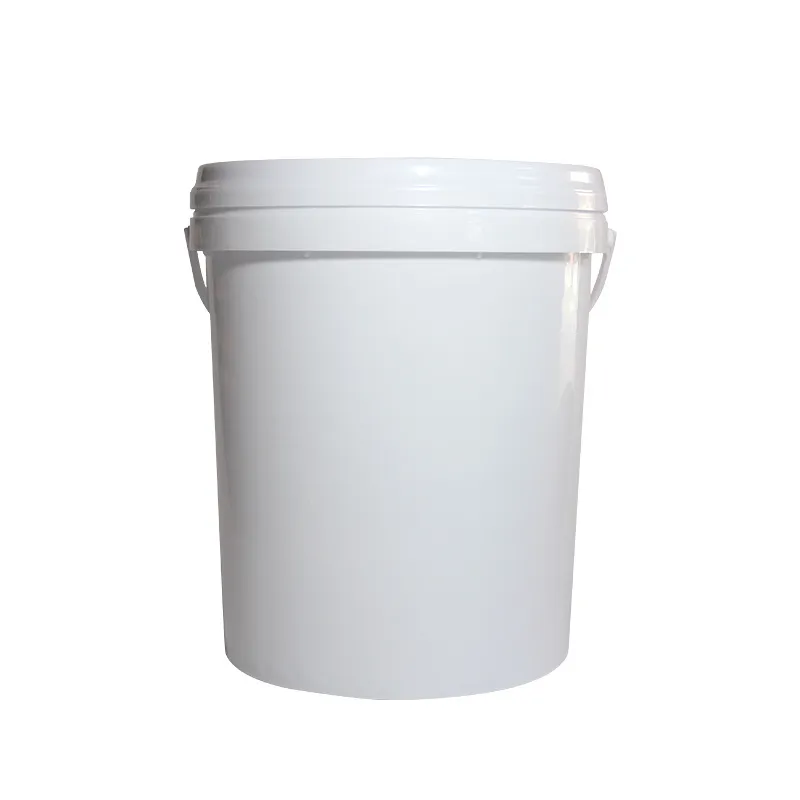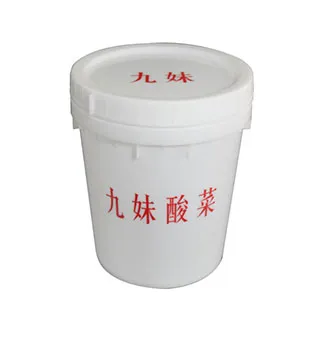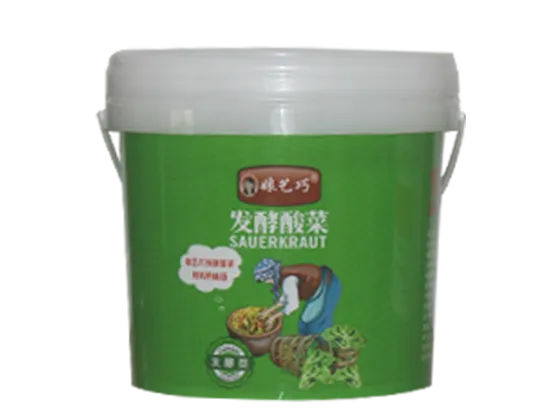Quality standard for 20 litre plastic food buckets
1. Physical properties
The physical properties of the 25 litre plastic food bucket are the basis of its quality inspection. The physical properties mainly include the wall thickness uniformity, strength, toughness and impact resistance of food plastic drums.
To be specific:

Wall thickness uniformity: The wall thickness of the symmetrical part of the plastic body of the 25 litre plastic food bucket is not more than 2:1, ensuring the overall strength of the plastic bucket body is balanced.
Strength and toughness: plastic drums must be able to withstand a certain vertical impact drop test and stacking test, without damage or obvious deformation.
Impact capacity: Pay special attention to the plastic containers of the mounted handle and the integral handle, and also need to carry out suspension tests to ensure that it is not easy to damage during handling.
Size specification: such as caliber, main diameter, height, etc. should meet the design requirements to ensure compatibility with supporting equipment.
2. Chemical properties
The chemical properties of food plastic buckets are directly related to the safety of food. Mainly includes the corrosion resistance and chemical stability of the material:
Corrosion resistance: The 25 litre plastic food bucket should have good corrosion resistance to most acids, alkalis and other chemicals to ensure that the food is not contaminated during storage.
Chemical stability: The material should be stable and will not release harmful substances, such as plasticizers and heavy metals, during food contact.
3. Permeability
Permeability is a key performance index of food plastic drums. The plastic bucket should have good barrier property to prevent the liquid or gas in the food from penetrating out, and it should also prevent external substances
from penetrating into the bucket.
Barrier properties: The food plastic bucket body material should have small permeability to water vapor and air, and low water absorption, ensuring that the food maintains its original quality during long-term storage.

Step 4: Transparency
Although the transparency of the food bucket is not a necessary indicator for all food plastic buckets, it is particularly important for occasions where the internal food status needs to be visually checked.
Transparency requirements: According to actual needs, some food plastic buckets need to have good transparency, so that users can directly observe the condition of the food in the bucket.
5. High temperature resistance
High temperature resistance is one of the important properties of food plastic drums in a specific use environment.
High temperature resistance range ** : According to different materials (such as HDPE, PP, PC, etc.), the high temperature resistance of plastic drums is different. In general, PP material has good high temperature resistance, can
withstand the temperature range of -20 ° C to +90 ° C, and can withstand high temperatures of about 100 ° C in a short time. The selection should be determined according to the specific use environment and temperature
requirements.

6. Easy cleaning
Easy cleaning is an important factor to ensure that food plastic buckets can be reused.
Cleaning convenience ** : The barrel inside and outside should be smooth without dead corners, easy to clean. The design of the mouth of the barrel should be reasonable to facilitate the flow of cleaning liquid into and out.
Antibacterial performance: The material should have certain antibacterial properties to reduce the possibility of bacterial growth.
7. Identification and packaging
Labeling and packaging is an important link to ensure the compliance of 25 litre plastic food bucket .
Marking requirements: The barrel body should be clearly marked with material type, manufacturer, production date, shelf life, precautions and other information, so that users can correctly identify and use.
Packaging specification: The outer packaging of the finished product should be firm and reliable to prevent damage during transportation and storage. At the same time, there should be corresponding warning signs and instructions
on the packaging to remind users to pay attention to safe use.
8. Tightness test
Tightness testing is a key step in ensuring that the 25 litre plastic food bucket maintains food quality during storage.
Test method: Seal the open barrel to ensure that the lid or plug sealing system can effectively prevent external substances from entering the barrel; Airtight test and hydraulic test are carried out on the closed barrel to verify its
sealing performance.
Test standards: Test according to relevant industry standards and regulations to ensure that the sealing performance meets the specified requirements.
To sum up, the quality inspection standard of the 25 litre plastic food bucket covers many aspects such as physical properties, chemical properties, permeability, transparency, high temperature resistance, easy cleaning, identification
and packaging, and sealing testing. Together, these standards constitute an important system to ensure the quality and safety of food plastic drums.If you need to know more about the 25 liter round plastic drum in the future, you
can contact our factory directly
